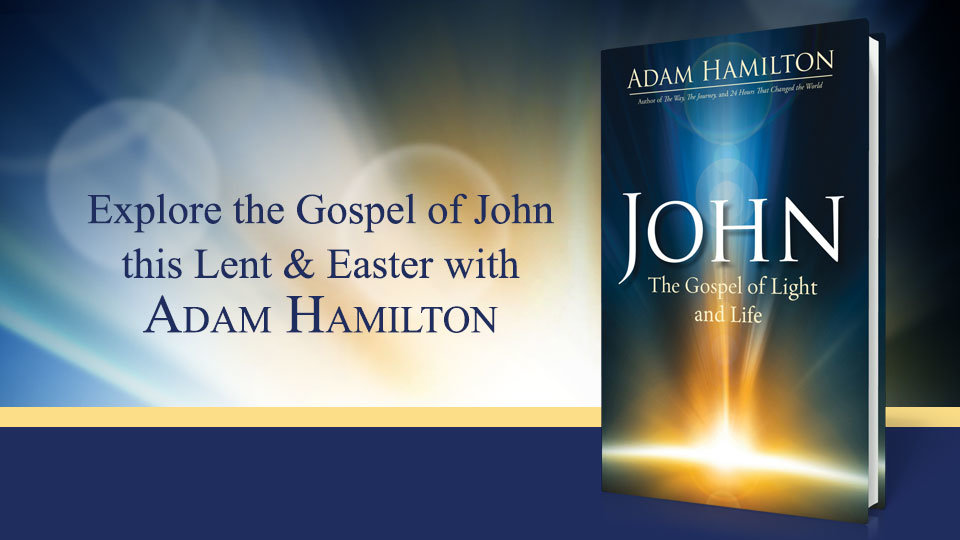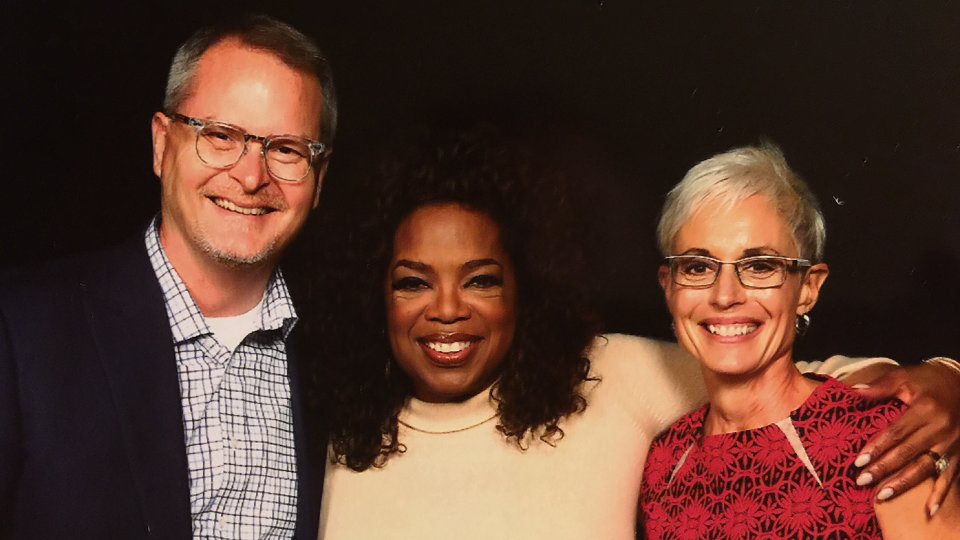The Lenten Challenge Begins Soon; Are You Ready to Read Through John?
I hope you’re planning to join me in reading through the Gospel of John during the Lenten season this year. We’ll get started on Ash Wednesday on February 10 and read together for 40 days. To guide you through John, I’ve written a new book, John: The Gospel of Light and Life. This book is divided into 6 chapters to help you explore the major themes of the Gospel and is meant to be read alongside the Scripture. With that in mind, the entire text of John is included. At the end of each chapter you’ll find a portion of the Gospel, and if you read each portion after you read the chapter, by the end of the book you will have completed the Gospel of John. What if your entire church, or even just your small group, committed to read the entire Gospel of John together this Lent, and to take an in-depth look at the major themes in the gospel? At Resurrection we’re anticipating this study will deepen our faith and unify our church. We have created several resources to help you and your church as you read through the Gospel of John. You can find those here. Today’s post is an excerpt from Chapter Two, “The Miraculous Signs of Jesus” in John: The Gospel of Light and Life. Changing Water Into Wine John calls the miracles of Jesus “miraculous signs.” A sign points toward something else. Scholars often refer to John 2 through 12 as the “Book of Signs.” John’s stories of Jesus are intended to have a deeper meaning, which answers the questions, Who is this man Jesus? How does he affect my life? What is required of me? Today, we’ll focus on Jesus’ first miraculous sign in John 2:1-12—turning water into wine—and how we might study it to find deeper meaning. Jesus and his disciples had been invited to a wedding, and a wedding banquet followed. Jewish wedding banquets in the first century are thought to have lasted seven days. These occasions were then, as weddings and wedding receptions are today, among the great moments in the life of a family and one of the most joyful times in any community. It’s for this reason that the Bible often associates heaven with a wedding banquet. But remember, there is a deeper meaning to John’s stories. This story is not only about Jesus providing wine for a wedding but also about the life he offers to each of us. At the wedding banquet described in John 2, the wine ran out. This was terribly embarrassing for the host. Remember, at that time water was not always safe to drink, and people often drank wine at every meal. Wine offerings were made to God as a sign of life and joy and goodness. And though some passages of Scripture warn about drunkenness, there also are many that portray wine as a good part of life. (There are over 250 references to wine in the Bible, and most are positive.) In the story, Jesus’ mother came to Jesus and told him the wine had run out. Then she told the servants to do whatever Jesus told them. We don’t know that Mary was expecting a miracle at this point, only that Jesus was going to make sure the wine problem was solved. I think she may have imagined Jesus going with them to the local wineseller to purchase more wine. With this in mind, she gave instructions to the servants at the wedding banquet. But remember, John’s stories of Jesus are intended to have a deeper meaning. Here’s a question that might help you see the deeper meaning here: Who are Christ’s servants today? The answer: we’re his servants. Now, listen again to verse five: “His mother told the servants, ‘Do whatever he tells you.’” Note that when the servants did as they were told, a miracle occurred—water was changed to wine; the ordinary was converted to the extraordinary. John may have been saying, similarly, that if all of us do as Christ tells us, then our ordinary lives can become extraordinary. You might say, “Is that really what John meant?” We can’t be sure, but so much of John’s writing has multiple levels that the little clues and phrases may well point to this deeper meaning. The servants didn’t just fill the jars; they filled them “to the brim.” I think John is telling us that Jesus wants to fill us up completely. We’re meant to be overflowing, as a cup “runneth over.” Remember, the overarching theme of this Gospel is that we might have life in Christ’s name. Notice that the wine Jesus created from the water was not just any wine, but the really good wine. And not just a little, but a lot: perhaps 150 gallons! The wine that Jesus created was better than the wine the guests had been drinking before. John wanted us to see that the life Jesus offers is richer, deeper, and of a higher quality than the life we live apart from him. To find out more about the meaning of Jesus’ transformation of water into wine, and the point of the other miraculous signs recorded in John’s gospel, check out, John: The Gospel of Light and Life and read the Gospel of John this Lent!









